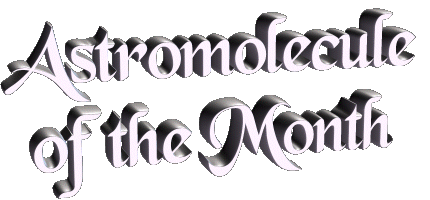|
With nearly three dozen observed neutral and anionic astromolecules, the
cyano group (–CN) is the most commonly observed motif in space.
One example of a cyano compound that has not been detected is cyanogen fluoride, FCN, which was sought by
Hollis & Ulich in the 1970s. They looked
for a single rotational transition of FCN unsuccessfully in four different sources: the star-forming regions
W3(OH) and
Orion A as well as
NGC 2264 and
Sgr B2(OH).
|
|
|
|
Cyanogen fluoride or fluorocyanide
can be formed in the lab, but it easily polymerizes to
cyanuric fluoride
(C3N3F3), which has a 6-membered ring structure of alternating C and N atoms with
a F atom bonded to each C atom.
As shown in the table below, quantum chemical calculations indicate that the F-CN bond is
strong, but it is weaker than the H-F bond. The drive toward equilibrium will thus favor HF (which was
found in space in the late 1990s) and
may explain the apparent absence of FCN. A possible place where FCN might still be found is a source where
methyl fluoride (CH3F) is present, which has a weaker C-F bond than FCN. However, CH3F
has not yet been detected.
| Bond
| D0 (kcal/mol)
| F–CN
| 119.3
| H–F
| 133.4
| CH3–F
| 107.4
| RCCSD(T)/aug-cc-pVTZ results
| | | | |
|







